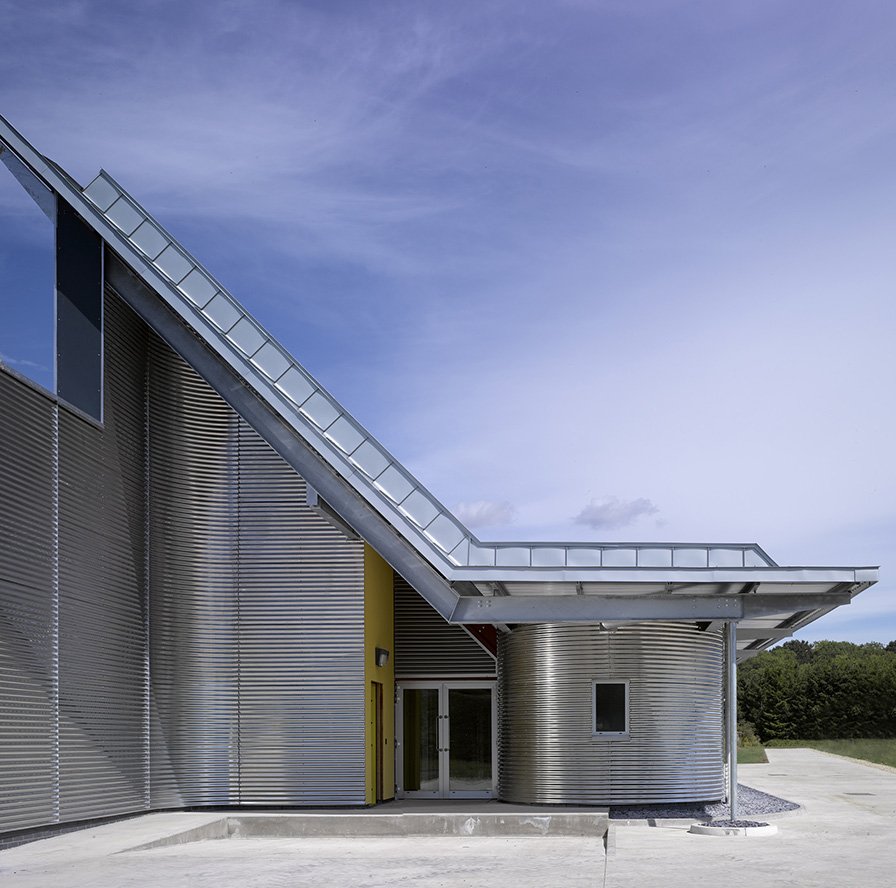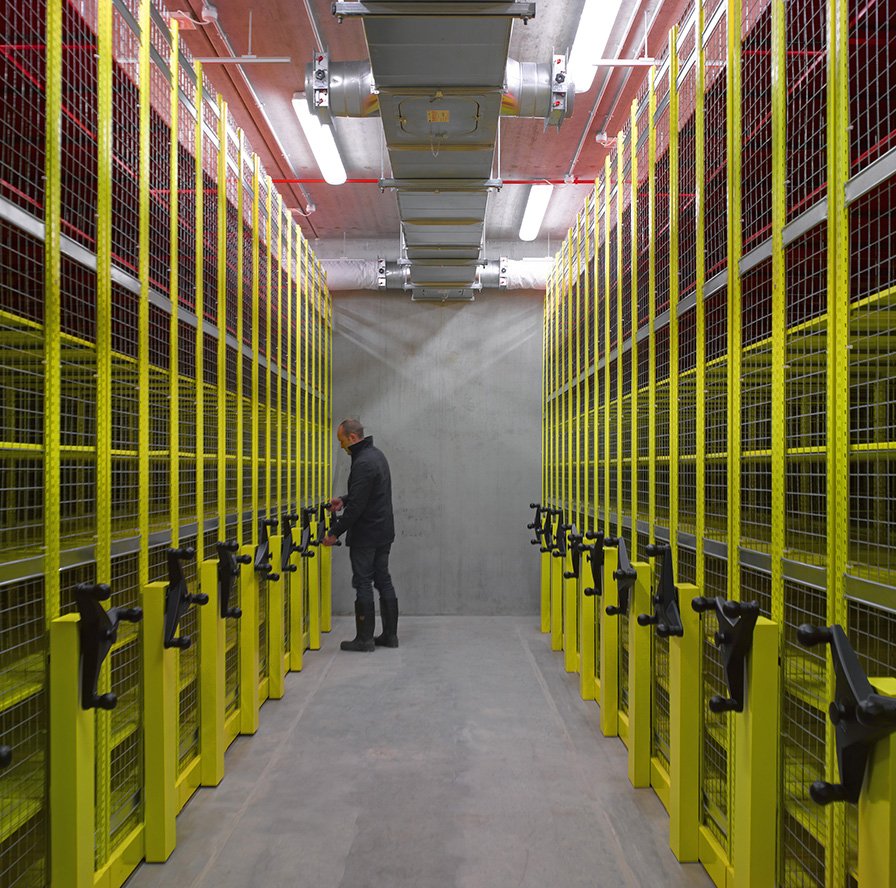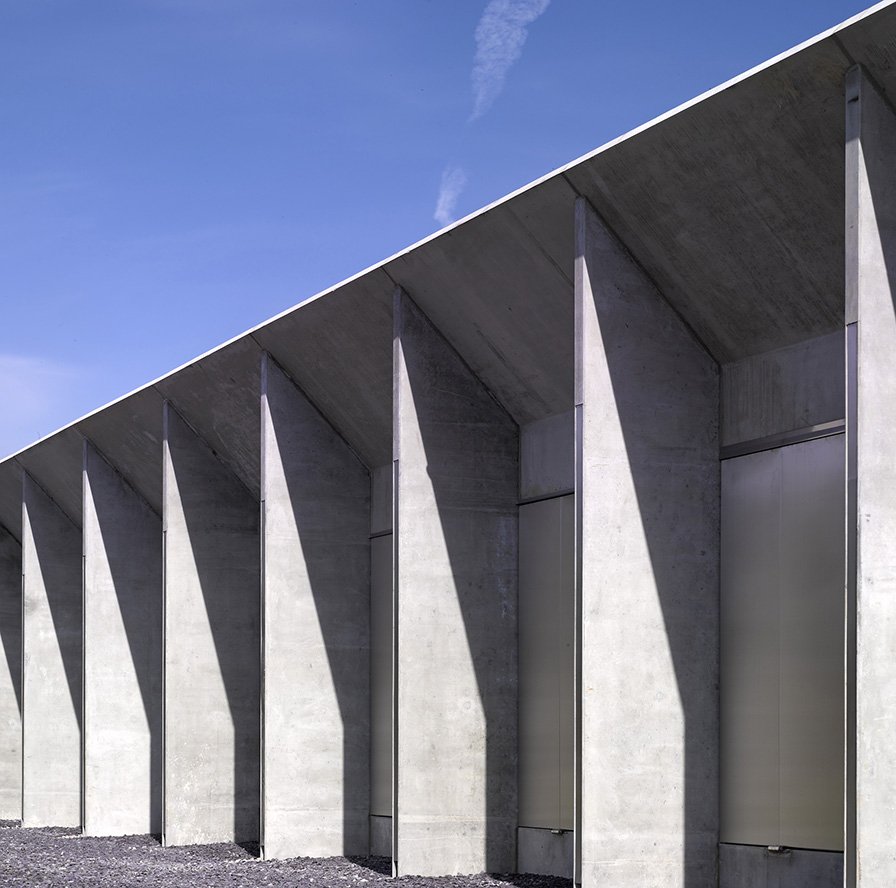BFI MASTER FILM STORE
Preserving an irreplaceable collection for future generations to enjoy
“In meeting the extraordinary and challenging design brief, the team has created a sophisticated and substantial building that maintains the sub-zero temperatures and low humidity environment so crucial for the long term storage of deteriorating and highly flammable film. The Master Film Store has set a new benchmark for safe and sustainable storage within the international film archiving community” Sarah-Jane Lucas, Project Manager, BFI
Project Insight
The British Film Institute (BFI) National Archives go back to the birth of film and are the most significant film and television collection in the world. Without proper storage conditions, however, fragile and unstable nitrate and acetate film risked being lost forever.
Storing a vast amount of film in optimal conditions for the next 50 years and beyond in a sustainable way meant looking for new technical solutions.
This was only possible through intense research, consultation and collaboration with the British Film Institute archive team, international film experts and engineers. With the best and latest thinking on film preservation, what we arrived at for the Master Film Store has set a new international standard for the storage of film.
Project Idea
A radical approach was needed to reach the right solution for the BFI Master Film Store. The collection is huge: 268,380 cans of acetate film, much of it at risk from ‘vinegar syndrome’, and 190,080 cans of nitrate film with a very low ignition temperature and fast burning rate.
Rigorous analysis, detailing and quality control were carried out to ensure the sub-zero temperature, low humidity and fire prevention required for the film’s preservation.
Although the building form is quite simple – 30 identical vaults for nitrate film and six vaults for acetate film – the specification required an extremely low air leakage rate to maximise performance. It also had to withstand intense heat in the unlikely event of a nitrate film fire.
Project Design
The Master Film Store surpasses anything that has gone before in archive design. Airtightness test results were 97 per cent better than even an exemplar low energy building; and the analysis of how a nitrate fire would behave, and how the building could be constructed to prevent the spread of fire, broke new ground.
The vaults keep the film at -5°C and at 35 per cent relative humidity. The fabric and services enable this environment to be maintained in an energy efficient way.
The building performs its function in an elegantly composed structure. The long elevations are articulated with large stainless steel over-pressure panels and concrete fire shrouds to the 30 cells for nitrate film. The stainless steel panels open in the unlikely event of fire to allow a clean burn and the pre-cast shrouds prevent heat spreading to adjacent cells.
The front and rear of the building house plant rooms, offices and workshops that did not require such a high performing envelope. These are clad in stainless steel sinusoidal cladding, reminiscent of Warwickshire’s agricultural buildings.
Not only have the challenges of creating the cold and dry environment needed for the protection of highly flammable film been met – but we’ve achieved this in a highly energy efficient way. The Master Film Store will save over £330,000 in annual energy costs and over 1,500 tonnes of carbon compared with initial options for refurbishing the BFI’s existing archive buildings to the same environmental conditions; and over £78,000 and 386 tonnes of carbon compared to a 2006 Building Regulations compliant building.
The BFI’s reputation as world leaders in the preservation of the moving image is secured and future generations will now be able to enjoy the unique record of British culture, history and identity offered by its collections.
Awards
RIBA National Award 2012
RIBA Regional Building of the Year 2012
AIA UK Excellence in Design Awards Commendation 2012
British Construction Industry Awards Building Project of the Year Highly Commended 2012
Building Awards Project of the Year Finalist 2012
MADE20 Award
Sustain’ Magazine Award for Design & Architecture









